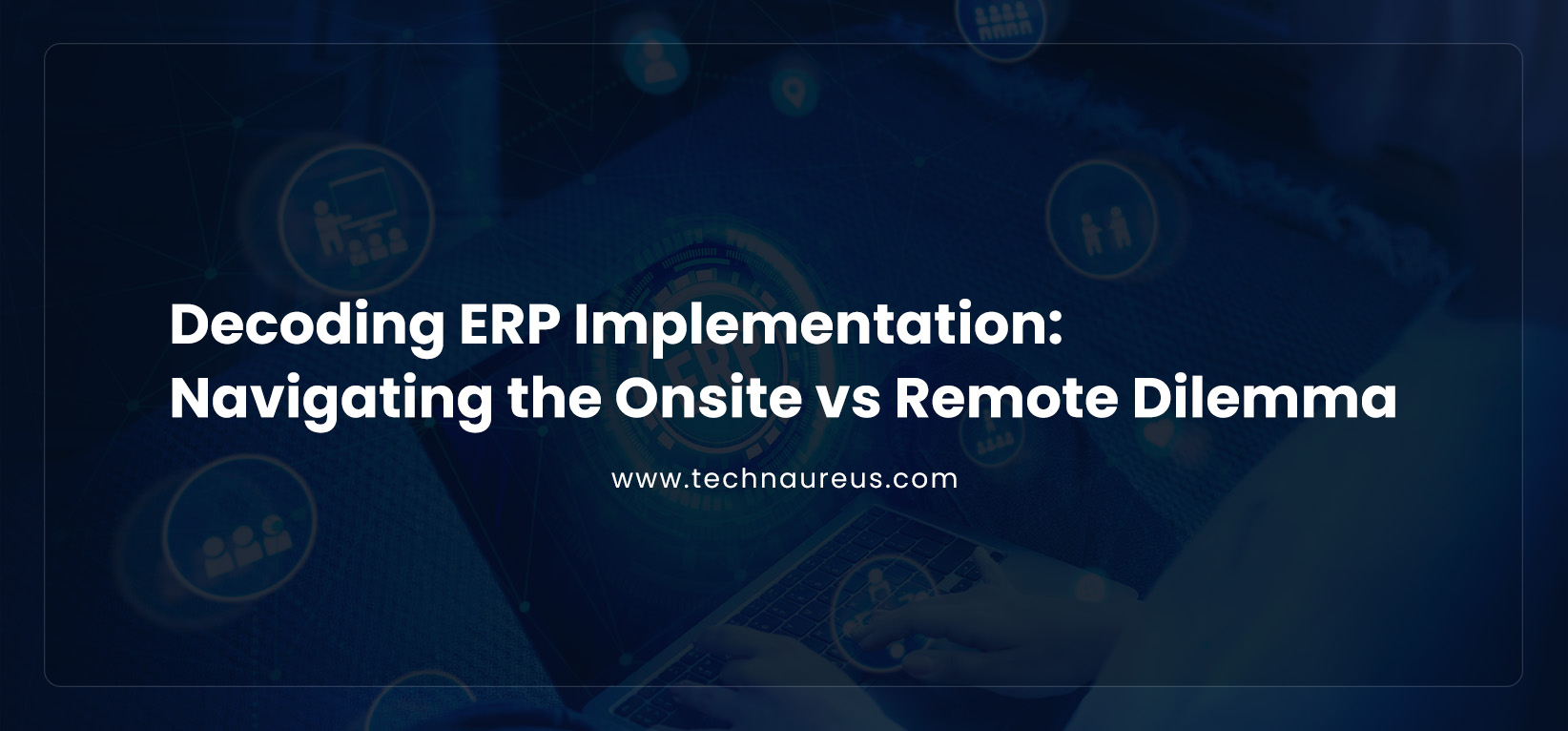Technaureus Info Solutions Pvt. Ltd.Jan. 29, 2024
Enterprise Resource Planning (ERP) implementation is a transformative journey for businesses, streamlining processes, enhancing efficiency, and unifying operations. One of the critical decisions in the ERP implementation process is whether to opt for onsite implementation or embrace a remote approach. In this blog post, we'll explore the considerations surrounding onsite and remote ERP implementation to help you make an informed choice.
Onsite ERP implementation involves the physical presence of the implementation team at the client's location. This approach fosters direct collaboration, real-time communication, and hands-on engagement with the client's processes and workflows.
Remote ERP implementation, on the other hand, relies on virtual collaboration and communication tools. The implementation team works from a location separate from the client, leveraging technology to bridge the gap and achieve project objectives.
The complexity and scope of the ERP project play a pivotal role in deciding the implementation approach. Large-scale, intricate projects may benefit from onsite presence to address nuances and challenges effectively, while smaller projects with well-defined scopes may be suitable for remote implementation.
The geographical location of the client and the ease of accessibility can influence the decision. Onsite implementation is more feasible when the client is located nearby, minimizing travel costs and logistical challenges. In contrast, remote implementation allows for collaboration regardless of geographical distance.
Consider the availability of resources, both on the client's side and within the implementation team. Onsite implementation may be preferred when hands-on involvement and immediate responses are crucial. Remote implementation can be more flexible, accommodating diverse schedules and time zones.
The availability and reliability of technology infrastructure play a crucial role in the decision-making process. If both the client and the implementation team have robust and secure communication tools, remote implementation becomes a viable option. Onsite implementation may be favored if there are concerns about technology limitations.
The preferences and comfort level of the client are significant factors. Some clients may value the in-person interactions and collaboration facilitated by onsite implementation, while others may prioritize the flexibility and convenience offered by remote implementation.
Onsite implementation enables direct face-to-face interactions between the implementation team and the client. This fosters better understanding, relationship building, and immediate issue resolution.
Hands-on training sessions can be conducted more effectively during onsite implementation. Users can receive personalized guidance and support, accelerating the learning curve and user adoption.
Complex issues and challenges can be addressed in real-time during onsite implementation. This immediate problem-solving capability can expedite the project timeline and ensure a smoother implementation process.
Remote implementation often proves to be more cost-effective, eliminating travel expenses and associated logistical costs. This cost efficiency can be especially appealing for projects with budget constraints.
Remote implementation offers flexibility and convenience, allowing team members to collaborate from different locations and time zones. This flexibility can accommodate diverse schedules and enhance overall project efficiency.
As technology continues to advance, the integration of virtual collaboration tools has become seamless. Remote implementation leverages these tools to facilitate effective communication, document sharing, and project tracking.
Recognizing the strengths of both onsite and remote implementation, many organizations opt for hybrid models. In a hybrid approach, critical project phases that benefit from onsite presence, such as initial assessments or training sessions, may be complemented by remote collaboration for ongoing tasks and support.
In the ongoing debate of onsite vs. remote ERP implementation, there is no one-size-fits-all answer. The optimal choice depends on the unique dynamics of your organization, project requirements, and the preferences of stakeholders. Whether you choose onsite, remote, or a hybrid approach, the key is to ensure effective communication, collaboration, and a shared commitment to project success.
As technology continues to evolve, the boundaries between onsite and remote implementation are becoming more fluid. Embrace the approach that aligns with your organizational culture, project scope, and the preferences of your team and stakeholders. Ultimately, successful ERP implementation is about striking the right balance that works best for your unique circumstances.


0